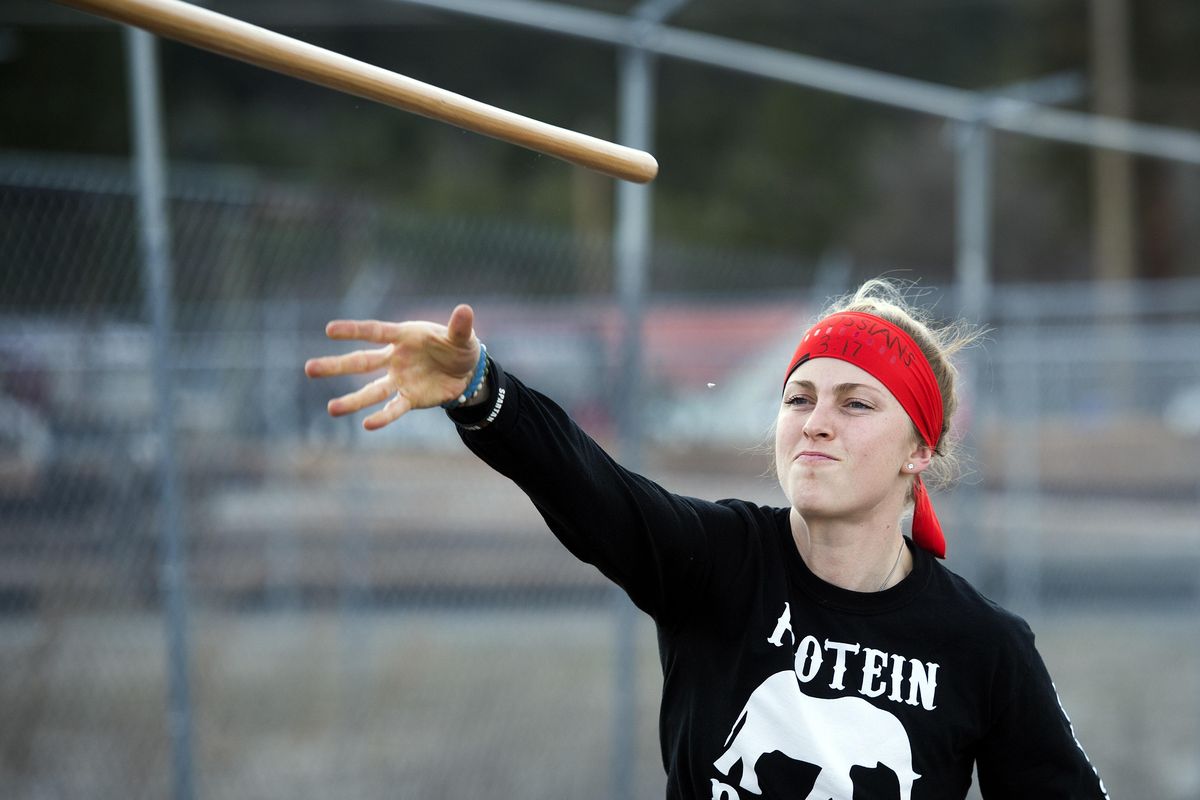Spokane Valley’s Alyssa Hawley trains for Spartan championship

The Reebok Spartan Race pushes competitors way past their comfort zones, giving racers the chance to find out if they have the gladiator-like drive to compete. Or as Spartan likes to say it, “You’ll know at the finish line.”
Spokane’s Alyssa Hawley knew when she crossed her first Spartan Race finish line in May 2015 at the Spartan Sprint Citi Field in New York City that the obstacle-laced races might be her calling. Despite it being her first Spartan Race, the 25-year-old finished first in the open division for females.
“I didn’t really expect anything out of it,” Hawley said. “But ever since then, I did it, I loved it and I just kind of ended up doing them.”
Hawley said she has always had the competitive drive. She played softball at University High and played center field for Stony Brook University her final two years of college. After graduating, Hawley looked for a new sport to train for and came across the Spartan races.
She competed in only one New York race before she moved back to Spokane and began working at her father’s construction business in Spokane Valley. But she was still determined to become a regular Spartan racer.
Hawley went on to run in seven more Spartan races in various states as an elite competitor and earned podium spots in nearly every one. In January, Hawley finished first in the women’s elite at the SoCal Spartan Super in Temecula, California, and then came in second in Temecula’s SoCal Spartan Sprint.
Those finishes earned her a spot in the Reebok Spartan Race World Championship in North Lake Tahoe, California, in October. The 11th-ranked Hawley will have the chance to run in the elite circuit alongside some of Spartan’s fiercest world competitors for cash prizes.
“What’s crazy to me is the fact that I can do this,” Hawley said. “The fact that I can go to Worlds and compete with the best in the world, it’s just mind-blowing.”
The military-style Spartan races began in 2010 and are designed to test even the most seasoned athletes. There are four main races within the Spartan league – Sprint, Super, Beast and Ultra Beast – that vary in length and difficulty.
The Sprint is the shortest of the races at a maximum of 5 miles with at least 15 obstacles along the course. The most difficult of the courses is the Ultra Beast, which is made up of at least 26 miles of tough terrain and 60 obstacles to conquer.
And that’s not the worst it can get.
The number of miles and tasks in each race is not usually set in stone. The so-called beauty of these races is that competitors never know what they’re in for until they get to a race. Unlike marathon runners, Spartan racers can’t study a course to prepare, so they have no idea what the terrain is like, how long they’re running for, or what kind of obstacles they’re required to complete until the day of the race.
Some of those obstacles can include throwing a spear, crawling in mud under barbed wire, climbing up rope, jumping over fire pits, flipping tires and carrying a bucket of gravel.
And, of course, Spartan makes sure these tasks aren’t too easy for competitors.
“They make it as hard as possible,” Hawley said. “I mean, it’s hard enough carrying a 50-pound bucket on flat ground, but no, they make you go uphill.”
If participants can’t complete a task, they have to do 30 burpees before they can advance to the next part of the race. And if a task is skipped without completing the burpee penalty or is done incorrectly, the racer is disqualified.
Hawley found herself among some of those unfortunate participants in her second Spartan race. She was eliminated from the Pac West Spartan Sprint at Washougal, Washington, in August after not finishing the Herculean hoist – lifting a sandbag through a pulley system – correctly.
“I had a real chip on my shoulder after that,” Hawley said. “It was a learning experience.”
She decided the only way to learn from her mistake was to incorporate 30 burpees into her training every day.
“I’m just a little crazy,” Hawley said. “I was in bed one time, and I was like ‘Oh, I forgot to do my burpees,’ so I got up and did 30 and then I went to bed.”
Hawley trains nearly every day at different fitness facilities and in her own training course set up behind her father’s business. Right now she is training for several upcoming races this summer before the world championship, and her father plans to be with her every step of the way.
Jon, 52, races in the open divisions of nearly every Spartan race in which his daughter competes.
“It’s life-changing, and it’s also memories we’re creating together. It’s awesome,” Jon said. The father-daughter duo is preparing for the next big race – the Montana Beast in Bigfork, Montana, in May. The Beast courses are at least 13 miles long and are filled with roughly 30 obstacles. The Montana race will give both Alyssa and Jon the opportunity to earn a Trifecta medal, which can be won after finishing a Sprint, Super and Beast in the calendar year.
Hawley said she’s only focused on the races in front of her now, since the world championship is still months away.
“You got to knock out the small stuff first,” she said.
Hawley might not be thinking about October yet, but she has given a lot of thought to what she wants to do later in life. She said she’s hoping she can compete in Spartan races well into her 30s – or until her body says otherwise – and then she wants to train others to compete.
“I just kind of feel like that’s God’s calling for me … like this is what I’m meant to do,” she said.